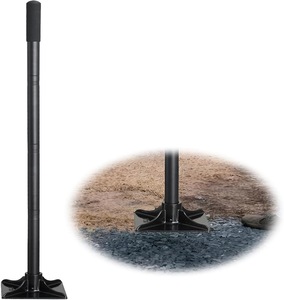The Ultimate Gardening Guide for Beginners: Every Little Thing You Need to Know
The Ultimate Gardening Guide for Beginners: Every Little Thing You Need to Know
Blog Article
The Comprehensive Overview to Horticulture: Discover the Advantages of Various Styles and Methods
Horticulture encompasses a varied variety of styles and approaches, each offering distinct advantages tailored to specific choices and environmental contexts. From the organized beauty of formal yards to the organic appeal of permaculture, understanding these variants is vital for cultivating a space that not only grows yet also mirrors individual worths and appearances. In addition, sustainable practices play an important duty in boosting local ecological communities and ensuring long-term success. As we discover these various styles, it ends up being noticeable that the selections made can significantly influence both the garden's health and its contribution to the surrounding environment.
Comprehending Horticulture Basics
Recognizing the fundamentals of gardening is important for cultivating a prospering and lasting yard. A successful gardening undertaking begins with a strong foundation of knowledge relating to soil, plant option, and climate considerations. Healthy and balanced soil is the cornerstone of any garden; it supplies vital nutrients, water retention, and an environment for advantageous microbes - Gardening. Examining soil pH and nutrient degrees can direct changes to optimize plant growth.
Choosing the right plants is just as vital. Understanding their particular demands-- such as sunshine, water, and spacing-- makes sure compatibility with the local climate and soil problems. This option procedure must also consider the growth habits and lifecycle of plants, enabling for a balanced and visually pleasing yard.
Moreover, reliable sprinkling methods are vital. Over-watering and under-watering can both result in plant stress and anxiety and condition. Carrying out a routine based on seasonal adjustments and plant requirements can enhance water performance.
Popular Horticulture Styles
What defines the essence of preferred gardening styles? These designs envelop diverse visual principles, functional requirements, and environmental considerations, inevitably mirroring the garden enthusiast's personal vision. Among one of the most distinguished designs is the home yard, defined by its casual layout and a vibrant array of flowers and vegetables. This approach emphasizes an unified blend of shade and appearance, creating an inviting atmosphere.
Alternatively, the official yard symbolizes balance and order, often including geometric patterns and thoroughly cut hedges. This design communicates sophistication and sophistication, with thoroughly chosen plants that strengthen a structured visual.
The Japanese yard offers a peaceful and reflective experience, making use of natural environments like water, rocks, and plants to create a serene environment. It concentrates on simpleness and equilibrium, urging consideration.
Additionally, xeriscaping has gotten appeal, especially reference in deserts (Gardening). It focuses on drought-resistant plants and efficient water use, promoting sustainability while boosting landscape elegance
Benefits of Container Horticulture
Container gardening provides a wide range of benefits that make it an enticing choice for both novice and knowledgeable gardeners alike. One of the primary benefits is adaptability; containers can be put in various areas, permitting garden enthusiasts to enhance sunlight exposure and develop aesthetically appealing setups. This versatility makes it possible to garden precede where typical in-ground gardening may not be feasible, such as porches, patio areas, or urban environments.
In addition, container horticulture offers much better control over dirt problems. Garden enthusiasts can tailor the soil mix to match details plants, making sure ideal drainage and nutrient accessibility. This is especially valuable for individuals staying in areas with poor or polluted dirt.
Another considerable advantage is the minimized threat of insects and illness. Container plants can be kept an eye on much more conveniently, and any kind of problems can be resolved without delay. In addition, this method can minimize the spread of invasive types.
Sustainable Gardening Practices
Sustainable horticulture techniques are necessary for advertising ecological health and boosting biodiversity in our communities. These techniques prioritize environmental balance, source preservation, and using organic techniques to decrease negative ecological impacts. By using techniques such as composting, garden enthusiasts can minimize waste while enhancing soil health and wellness, thereby fostering a thriving yard community.
Water conservation is one more essential facet of sustainable gardening. Techniques such as rain harvesting, drip irrigation, and using drought-resistant plants can linked here considerably reduce water usage while making certain that plants get ample dampness. Incorporating indigenous plant varieties into garden designs sustains local wildlife and lowers the requirement for chemical plant foods and pesticides, which can be hazardous to the atmosphere.

Eventually, sustainable horticulture techniques not only contribute to much healthier yards yet likewise promote an even more resilient atmosphere, supplying long-lasting advantages to both the garden enthusiast and the bordering community.
Tips for Effective Horticulture
To grow a growing garden, gardeners need to focus on cautious preparation and thoughtful execution of their horticulture strategies. Begin by evaluating the local environment and soil problems, as these aspects considerably affect plant option and development. Select plants that are fit to your environment, thinking about indigenous types that will love marginal intervention.
Carrying out a well-structured layout is crucial (Gardening). Utilize buddy growing techniques to promote biodiversity and natural parasite control, while making sure each plant has ample room for development. This not only enhances visual appeals but also boosts total plant health and wellness
Regular upkeep is essential to a successful yard. Develop a regular schedule for watering, weeding, and feeding. Mulching can help maintain wetness and subdue weeds, while also including raw material to the soil.
On a regular basis checking plant health and development will certainly permit for prompt treatments. Be open to learning and adapting; gardening is a continuous process that benefits from experience and testing.
Conclusion


In summary, the expedition of varied gardening designs and methods discloses their multifaceted advantages, adding to both visual allure and ecological health. Container horticulture offers flexibility and ease of access, while lasting techniques enhance environmental stewardship.
Report this page